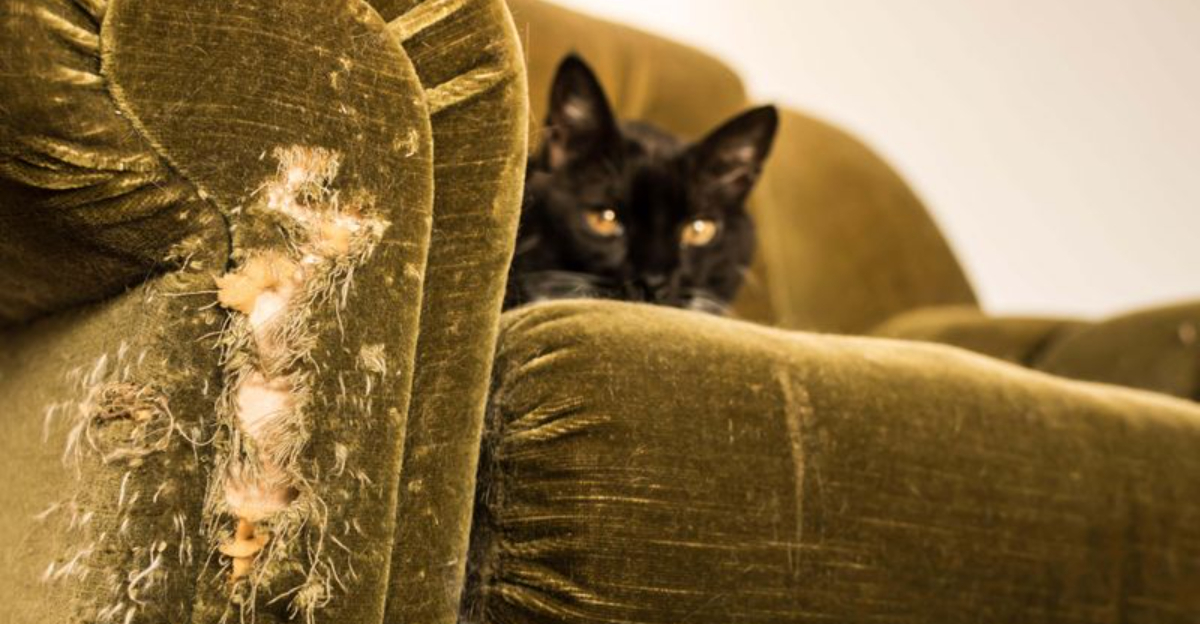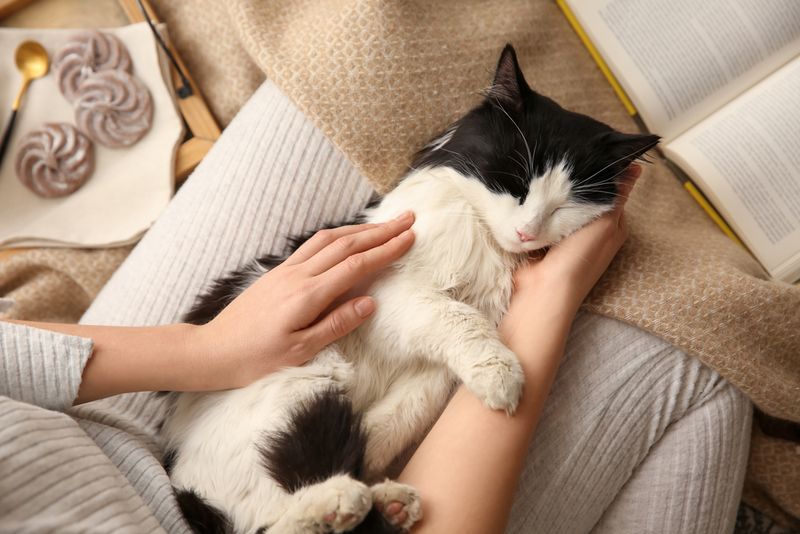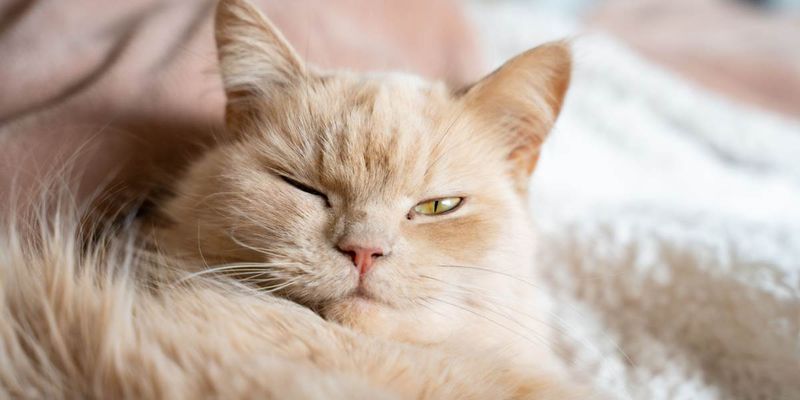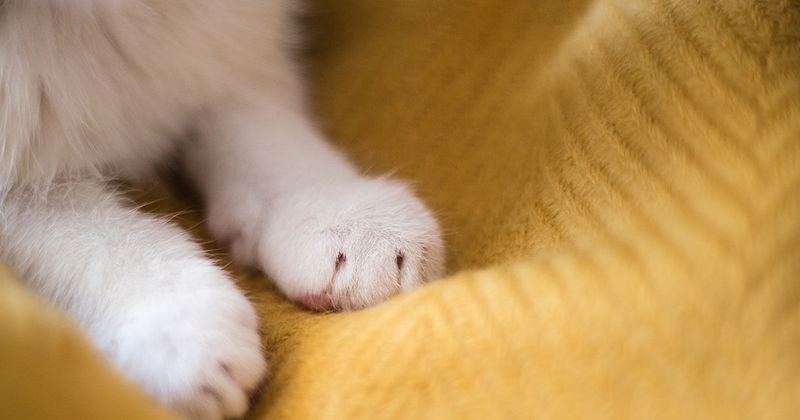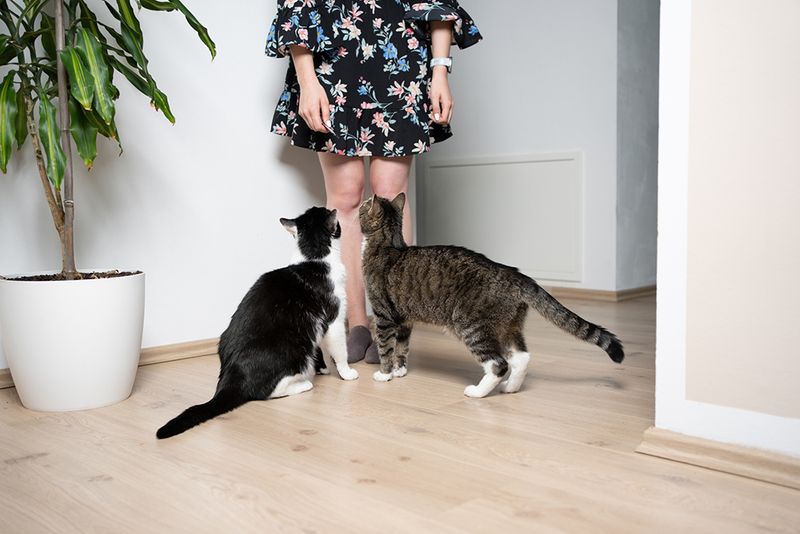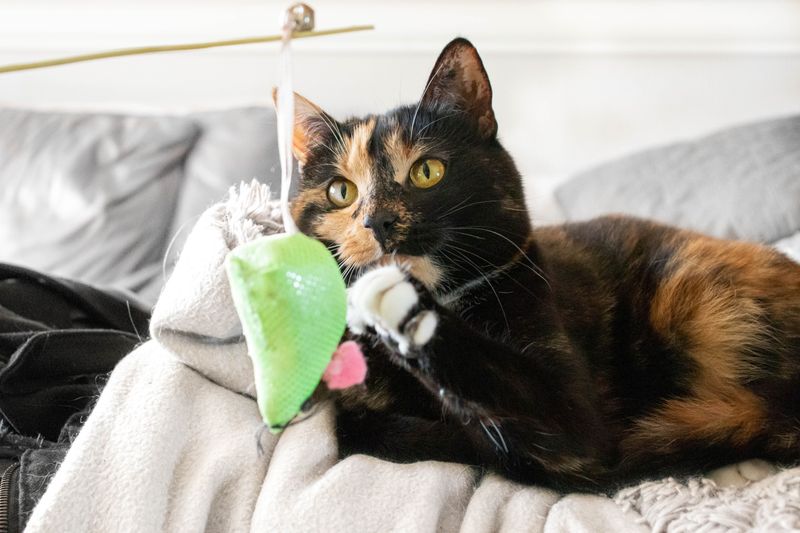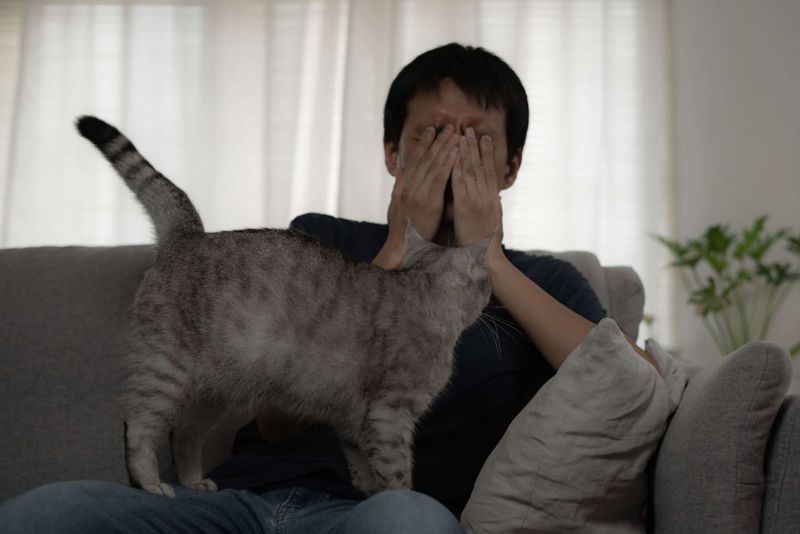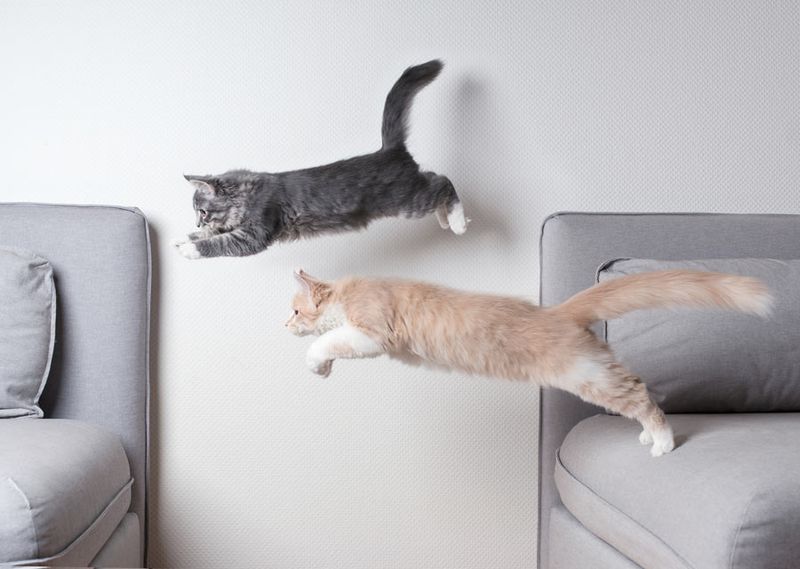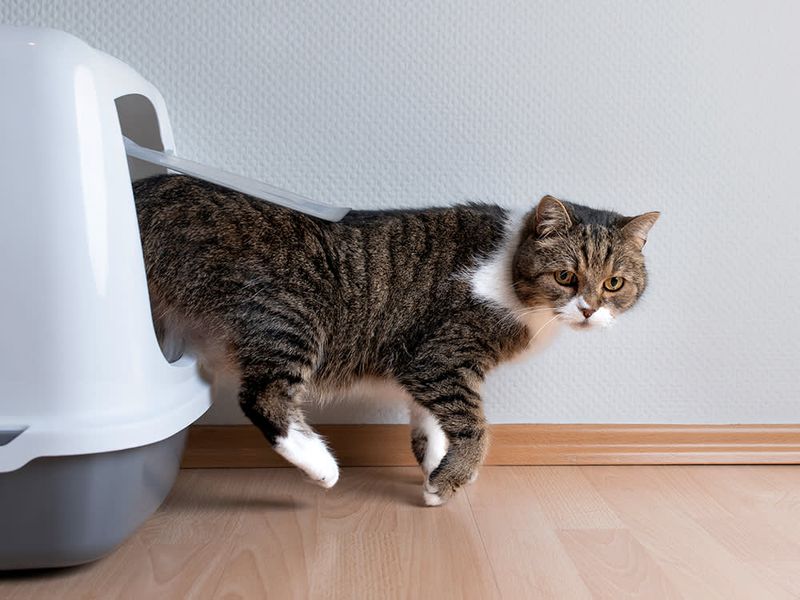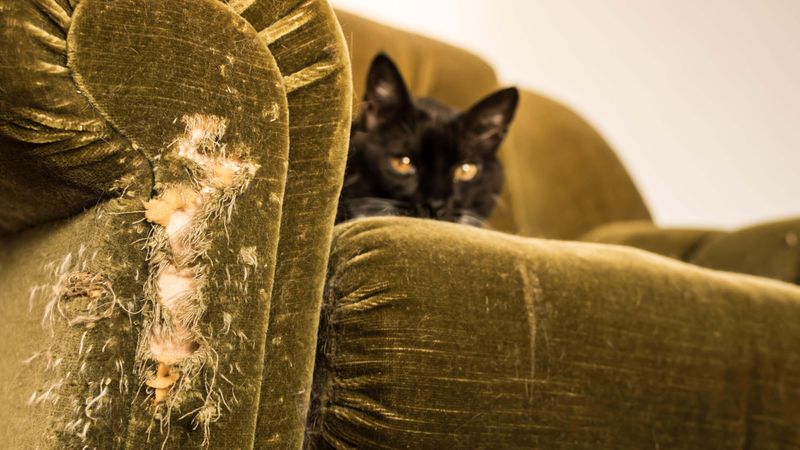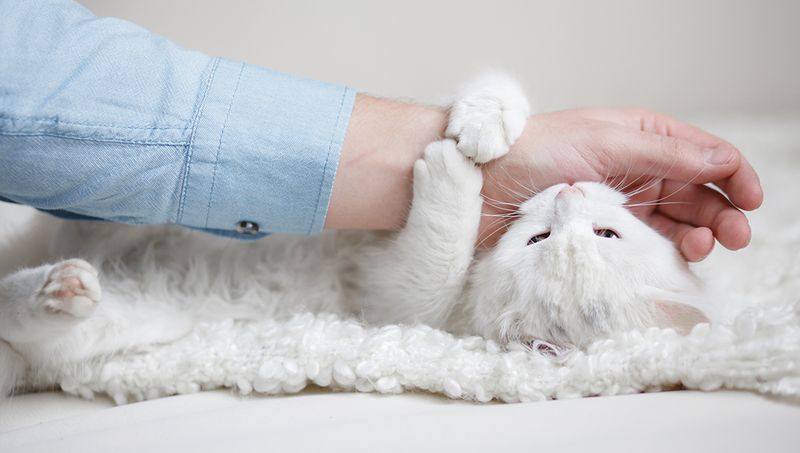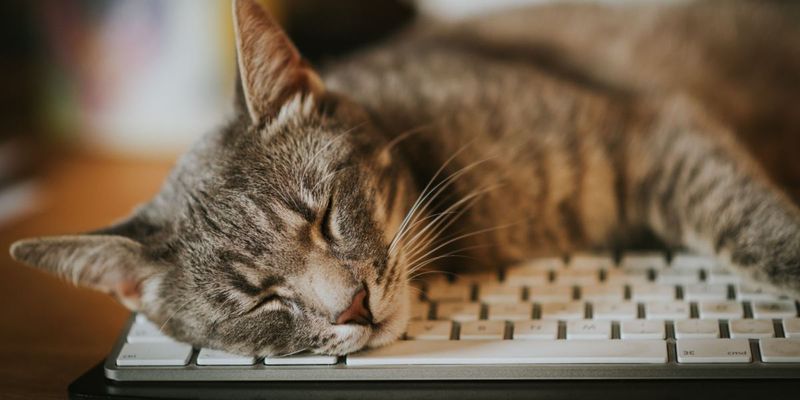📖 Table of Content:
- 1. Purring When They’re Near You
- 2. Slow Blinking at You
- 3. Kneading with Their Paws
- 4. Following You from Room to Room
- 5. Bringing You “Gifts”
- 6. Cuddling When You’re Sad or Sick
- 1. Midnight Zoomies
- 2. Knocking Things Off Shelves
- 3. Ignoring the Litter Box (on Purpose)
- 4. Scratching Furniture
- 5. Sudden Bites During Petting
- 6. Sitting on Everything You Need
Cats are mysterious, elegant, and often hilariously unpredictable creatures. Living with one means navigating a rollercoaster of emotions—from cooing over their cuteness to questioning your own grip on sanity after their latest 3 A.M. escapade. Yet, it’s exactly this duality that makes them endlessly fascinating companions.
Anyone who’s shared space with a cat knows that their behaviors walk a fine line between sweet and downright infuriating. One moment, they’re curling up beside you, exuding love and warmth; the next, they’re launching your favorite mug off the counter like it personally offended them. Understanding these quirks isn’t just part of cat ownership—it’s a rite of passage into the feline world.
This article takes a look at both ends of the emotional spectrum. We’ll celebrate the soft, affectionate habits that make you fall deeper in love with your cat, while also acknowledging those nerve-jangling tendencies that might have you seriously reconsidering ever leaving a glass of water unattended. In the end, these highs and lows combine to create the rich, wild, and unforgettable experience of being chosen by a cat.
1. Purring When They’re Near You
Every gentle rumble of a cat’s purr feels like an invisible thread stitching their soul to yours. It’s more than a sound—it’s an emotional signal that radiates trust and contentment. Cats purr not only when they’re happy, but also to self-soothe or comfort others, making it a deeply layered behavior. When they choose to sit beside you and hum their quiet melody, they’re offering a rare, wordless connection. There’s something ancient and instinctive about the way purring calms human nerves, lowering stress levels almost instantly. Whether you’re reading, watching TV, or simply sitting in silence, that soft vibration can turn an ordinary moment into something sacred. Few things in life are as quietly powerful as the simple presence of a purring cat.
2. Slow Blinking at You
It begins with a gaze—steady, unblinking, full of feline mystery—then slowly, deliberately, their eyes close and reopen. This slow blink is a sign of deep trust and affection, often described as the cat’s way of kissing you with their eyes. Many cat behaviorists encourage humans to return the gesture, and when you do, you might witness a mutual exchange of respect and closeness. Unlike wagging tails or licks, this form of communication is subtle and reserved for those they feel truly safe around. In the wild, closing one’s eyes even briefly is a vulnerable act, so a slow blink is a gift of trust. It’s their quiet way of saying, “I see you, and I feel safe.” These tiny moments often build the strongest bonds.
3. Kneading with Their Paws
Soft paws press into your blanket, your stomach, or your lap in a rhythmic dance that dates back to kittenhood. Known as kneading, this behavior is a leftover instinct from nursing, when kittens stimulated milk flow from their mothers. As adults, cats continue this practice when they feel comfortable and secure, often associating it with warmth and pleasure. Some cats even drool slightly as they knead, entering a blissful, trance-like state. For humans, the sensation can be odd but endearing—a quirky expression of love that’s wholly feline. Sometimes it even hurts a little if claws are involved, but the meaning behind it softens the sting. Watching your cat knead away reminds you just how deeply rooted their emotions can be.
4. Following You from Room to Room
Shadow-like and silent, your cat may trail you like a four-legged ghost, appearing wherever you go. This behavior is especially charming because cats are known for their independence, so when they choose to follow, it’s meaningful. They aren’t necessarily looking for attention every time; they simply want to be near you. It’s a quiet companionship that doesn’t demand, just observes and participates. They might perch on a windowsill while you cook or curl up near your desk while you work. That non-intrusive presence is a form of love that feels unique to cats. Over time, their constant, silent company becomes one of the most comforting parts of your daily routine.
5. Bringing You “Gifts”
Sometimes it’s a toy mouse, sometimes it’s… less pleasant. Cats are natural hunters, and when they drop something at your feet, it’s an offering—an attempt to share their success or care for you. This behavior often stems from instinct, mimicking how mother cats teach their young to eat and hunt. While receiving a sock or a dead bug might be alarming, the gesture behind it is sincere. They don’t understand why you might shriek at a lizard tail—they think they’re being helpful. Accepting these gifts, awkward as they are, is part of building trust and mutual understanding. It may not be the gift you want, but it’s definitely the one your cat thinks you deserve.
6. Cuddling When You’re Sad or Sick
Uninvited but always well-timed, cats have an uncanny way of sensing when something’s off. They often appear when you’re under the weather or emotionally low, offering quiet support through their presence. Science suggests cats are responsive to tone of voice and subtle changes in routine, which may alert them to your distress. Whether it’s curling up on your lap during a tough day or lying beside you in bed when you’re ill, these moments are quietly powerful. They don’t meow or fuss—they simply stay close, as if to say, “I’m here.” This form of nonverbal empathy is both surprising and deeply moving. It’s during these times that their companionship feels especially profound.
1. Midnight Zoomies
Out of nowhere, your peaceful night is interrupted by the thunder of paws racing down the hallway. Cats often get bursts of energy at night, a throwback to their crepuscular hunting instincts. This phenomenon, affectionately dubbed “the zoomies,” can be hilarious—if you’re not trying to sleep. They’ll ricochet off furniture, dive under rugs, and leap onto shelves as if chased by an invisible force. It’s normal, healthy behavior, though inconveniently timed. While you lie in bed questioning your life choices, your cat is reenacting a jungle chase scene. Investing in evening play sessions can sometimes curb the chaos, but not always.
2. Knocking Things Off Shelves
First, they stare at the object. Then comes the slow paw lift. You already know what’s about to happen—and yet, it still takes you by surprise when your glass of water hits the floor. Cats seem to be fascinated by cause and effect, and pushing things off surfaces is part of their learning. It might be attention-seeking, boredom, or just curiosity at play. Unfortunately, your decor is often collateral damage. It’s infuriating and oddly comical, especially when they watch you clean up with zero remorse. Discipline rarely works, so cat-proofing shelves becomes a reluctant art form.
3. Ignoring the Litter Box (on Purpose)
At first, you assume it’s a mistake—but then it happens again, and you realize your cat might be sending a message. Changes in litter box behavior are a red flag, either for medical issues or emotional unrest. A dirty box, territorial disputes, or even household changes can trigger this rebellion. Whatever the reason, it’s unpleasant for everyone involved. Cats are creatures of routine, and disruptions can lead to some smelly consequences. Solving the issue often requires patience, vet visits, and serious detective work. It’s a sharp contrast to their otherwise clean and graceful demeanor.
4. Scratching Furniture
One moment your couch is pristine, and the next it’s a shredded warzone. Scratching is a natural behavior for cats—they use it to mark territory, stretch their bodies, and maintain claw health. Unfortunately, your furniture makes an irresistible scratching post. Even when you provide alternatives, some cats stick to their favorite corners or arms of chairs. It’s not personal—it’s instinct—but it certainly feels personal when your new sofa falls victim. Deter sprays, scratching pads, and training can help, though results vary widely. Ultimately, a cat’s claws are just part of the package.
5. Sudden Bites During Petting
What begins as a sweet cuddle session can quickly take a turn. Cats can become overstimulated by petting, even if they seemed to be enjoying it seconds before. These “love bites” are confusing and often painful, leaving you wondering where you went wrong. They’re not being mean; they’re just sensitive to touch and have personal boundaries. Watch for signs—tail flicks, flattened ears, or sudden tenseness. Respecting those cues helps avoid surprise chomps. It’s a quirky reminder that affection, for a cat, comes with fine print.
6. Sitting on Everything You Need
The moment you lay out a paper, open a laptop, or fold laundry, your cat appears like a summoned spirit. Cats love warmth, texture, and especially your attention, which is why they always seem to park themselves on the exact item you’re using. To them, it’s a win-win: they get comfort, and they get closer to you. Meanwhile, you’re trying to type with a furry tail on your keyboard. While it can be frustrating, it’s also a funny glimpse into how much they want to be part of your life. Giving them a designated “workspace” nearby can help—sometimes. More often, you just give up and let them stay.
